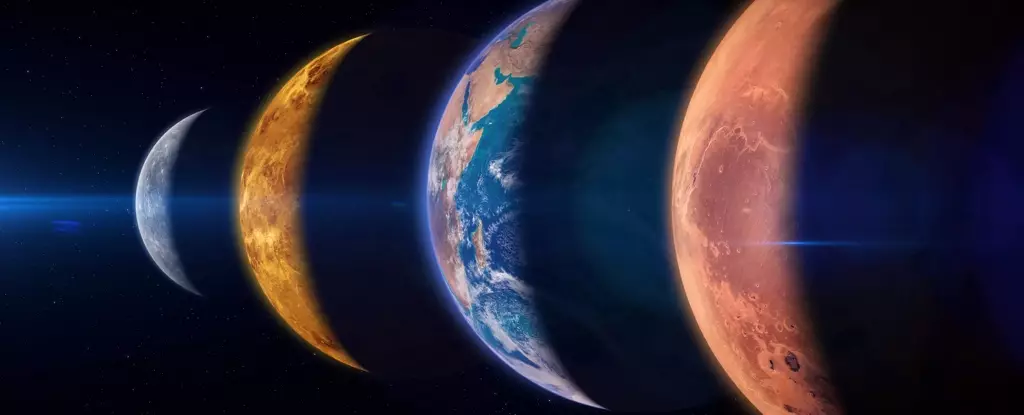On the night of February 28, 2025, skywatchers worldwide will be treated to a rare and spectacular event: a grand planetary alignment featuring all seven of the Solar System’s planets. This celestial phenomenon, often dubbed a “great planetary alignment,” offers a visual feast for stargazers, showcasing Saturn, Mercury, Neptune, Venus, Uranus, Jupiter, and Mars all aligned in a straight line across the night sky. While occasional alignments of two or three planets are common, the occurrence of seven planets lining up is exceptionally rare, making this event a remarkable occasion for astronomy enthusiasts.
Understanding the mechanics of planetary alignment requires a deeper dive into the structure and behavior of the Solar System. The planets orbit the Sun in a configuration aligned with an imaginary flat plane known as the ecliptic. Although some planets have slightly tilted orbits, they generally maintain a relative alignment that allows for visual alignments from our vantage point on Earth. Such alignments do not create an exact straight line as often depicted in illustrations; rather, the planets appear to congregate along a line due to our perspective from Earth.
Planetary alignments occur when the planets find themselves on the same side of the Sun. This alignment phenomenon is influenced by the orbital periods of the planets, which vary significantly. For instance, the innermost planet, Mercury, completes its orbit in just 88 Earth days, while the outermost planet, Neptune, takes a colossal 165 Earth years to complete one orbit. Consequently, alignments involving multiple planets come about infrequently, making each occurrence a cause for celebration within the astronomical community.
The classification of alignment can vary, with five-planet alignments being relatively common and six-planet formations occurring less frequently. A seven-planet alignment, such as the one slated for February 2025, is an extraordinary event. Historically, these celestial gatherings have captured the imagination of not only astronomers but also cultures and civilizations throughout history. They often evoke a sense of wonder and excitement, prompting communities to gather and observe the night sky together.
While astronomers can predict these alignments with impressive accuracy, the actual experience of witnessing the celestial dance requires clear skies and optimal viewing conditions. Depending on one’s geographic location, visibility may vary, and timing becomes crucial to observing this phenomenon.
For those eager to partake in this spectacular astrophysical event, preparation is key. Numerous resources are available to assist observers in timing and locating the planets within the sky. Websites like Time and Date and Stellarium provide interactive tools to visualize planetary positions and calculate rise and set times for astronomical bodies.
Moreover, mobile applications such as Sky Tonight can significantly enhance the viewing experience. By utilizing built-in GPS technology, these apps make it easy for observers to identify exact locations of celestial objects. However, to fully appreciate the planets in their splendid detail, the use of binoculars or telescopes is recommended. This aspect of stargazing adds an extra layer of engagement, allowing enthusiasts to discover the beauty of the planets’ features and colors.
As the date approaches, stargazers around the world should begin to formulate their plans to revel in this remarkable event. The great planetary alignment promises not just a visual spectacle, but an opportunity for reflection on the wonders of our universe. Whether observed alone or with a community of fellow astronomers, this rare occurrence is an invitation to connect with the cosmos and marvel at the celestial choreography of our neighboring planets.
Indeed, clear skies will be essential for a successful viewing experience. So mark your calendars and start dusting off your telescopes and binoculars because on the night of February 28, 2025, the universe will put on a show unlike any other, inviting us to gaze into the depths of space and time.

